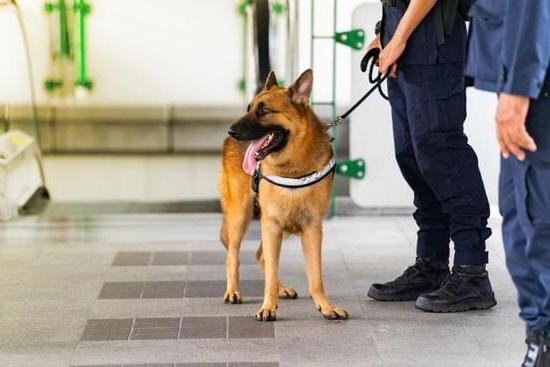Introduction
Crate training is the process of teaching a dog to become comfortable spending time in a crate. This can include sleeping, relaxing, and/or simply being confined for short periods of time. Crate training provides several benefits for both you and your dog. These include:
• Ensuring potty training success — Containing your dog in a crate restricts access to using the bathroom in or around the house. Instead, you can take your pup outside where they will learn to appreciate going to the bathroom in designated areas.
• Keeping them safe – According to the ASPCA, hundreds of thousands of pets are injured or lost each year due to unsupervised activities while inside the home; with crate training, you can provide your pup with a safe environment that allows you peace of mind knowing they won’t get into any type of trouble while unsupervised.
• Creating consistent boundaries — When you first introduce your pup with their crate it reinforces healthy boundaries within the home and teaches them how to differentiate acceptable and unacceptable behaviour.
• Instilling good behavior — Whenever you leave your pup unattended and unoccupied they may become bored and start looking for something else to keep occupied which could lead to naughty behaviors such as chewing or barking; by providing a cozy space that offers mental stimulation like chew toys it’ll help reduce behaviors caused by boredom.
• Easing transitions -When changes like relocating, adding new members or animals into the family dynamic, or even visiting unfamiliar places occur; introducing a crate can reduce stress levels thanks to providing an element of familiarity right off the bat regardless of what location they may find themselves in.
Preparing for Success
In order to ensure the success of crate training a dog, it is important to have the right environment and supplies. The first step is to purchase a crate that is large enough for your dog to comfortably move around and stand up in. Make sure to provide them with soft bedding and any toys they may need while inside the crate. The area they are in should also be comfortable and temperature controlled as dogs don’t do well in rooms that are too warm or too cold.
It is also necessary to establish clear rules when it comes to using the crate, such as only wanting them inside when you are present. When entering the room you can use verbal cues such as “kennel” or “crates” followed by treats for positive reinforcement. You can start by keeping the door of their crate open but gradually work up to closing it once they are completely comfortable going inside on their own. Additionally, make sure you give him plenty of time outside the crate either playing or cuddling with family members so they know they not confined forever. Eventually, you should have limited to no resistance when asking your dog to stay in their kennel during different activities like going out or getting ready for bedtime.
Getting Familiar
Before you begin the crate training process, it is important to make sure your dog has a comfortable environment as they adjust to the changes. Introducing the crate in an inviting manner greatly helps with the transition. Place their favorite toys and treats inside of their crate. You can also spread a towel or blanket on the bottom for extra comfort and security.
Making Going Inside Positive: Reward System
To help motivate them to enter the crate, you will want to employ positive reinforcement and a reward system. If they calmly enter when prompted, rewards such as treats or verbal praise can be given immediately afterward. This demonstrates that going into the crate is enjoyable and beneficial!
Increasing Time Spent Inside: Gradual Adjustment
After your pup is comfortable entering their crate and receiving rewards, gradually increase time spent inside to get them used to being there for longer periods. When practicing this phase of training, be sure not to leave your pup unattended for too long at once; no longer than 15-20 minutes apabt from a nap or overnight stay is recommended during initial periods of adjustment!
Paving the Way for Positive Experiences
With crate training, the ultimate goal is to ensure that a dog views the crate as a safe and comfortable space. This starts with introducing the dog to the crate in an environment where they feel relaxed and safe. Begin by feeding the dog their meals inside of the crate with the door left open, until they are more comfortable spending time in it. If your pup is hesitant to go into the crate, praise them while they’re near it, or leave treats inside so that they can encourage themselves to venture further in.
You may also want to place items that smell like you in the crate such as a blanket or an article of clothing so your pup will be more likely to view it as a comfortable and friendly space. As they become increasingly comfortable around the crate, you can begin closing it for brief periods such as during meal times or when leaving for errands. Start very slowly and build up gradually beginning with just 10-15 seconds at first and increasing this time in tiny increments each day if necessary. Whenever rewarding your pup for positive behavior related to using their crate, adding verbal rewards will be beneficial in addition to giving treats.
In order for positive experiences in the crate to become second nature for your pup, maintaining consistency is important; always follow through on what was established from the beginning of training without fail each time. Lastly, it’s important not to move too quickly through these stages; take breaks as needed so that your pup never becomes overloaded or overwhelmed throughout this process. Providing enough practice sessions spread over many days will allow your pup to adjust before moving onto tougher challenges such as longer stays inside of their kennel or waking up during nap times.
Developing Habits
Crate training your dog is all about establishing habits and creating rules and routines. Start off by introducing the crate in a way that’s positive – try filling it with a blanket or towel, or add items such as chews and toys. Place the crate in an area of your home that everyone in your family spends time in; this will help to foster feelings of comfort. You can also place one of your used sweaters inside the kennel – this has shown to help calm some dogs by providing them with an added layer of security from familiar scents.
Once you’ve introduced the crate, you’ll want to start slowly when it comes to expecting your pup to stay inside for longer periods. Begin by leaving them for short intervals at first, gradually increasing them over time; make sure these are fun times and full of rewards, like treats or extended playtime outside. As they get more used to being inside it for short periods, begin working up to overnight crating – again, always making sure its associated with rewards so they link it positively with being inside the space. This gradual process is key; sudden changes can cause stress which can make crate training more difficult.
Allowing for Adjustment
Before beginning the crate training process, it is important to make sure the dog is comfortable in the space and has room to move around. Think of it as a transition period for the pup to get used to its new environment. To do this, establish a routine so it knows when you’ll be back and can trust that everything will be okay when you leave. Make sure your dog has plenty of opportunities for exercise throughout the day as well. Regular exercise helps alleviate stress and keeps your pup from getting overly bored or anxious which can complicate any kind of training program. Additionally, take time each day to form positive associations with being in a crate by incorporating small rewards such as treats and toys during downtime in their crate. Speak calmly to your pup whenever they are in their crate, praising them when they settle down and rewarding calm behavior. This helps make their new lair feel like a safe place that they can enjoy spending time in, ultimately leading them towards feeling more relaxed while staying there alone once they become more comfortable with their new abode.
Working through Difficulties
Crate training a dog is not always easy, and some dogs may have difficulty adjusting to the concept. If your dog is having trouble getting comfortable in their crate or responds with negative behaviors, there are a few strategies that can help.
1. The goal should always be to create a positive experience in the crate by offering treats or toys that they like when they enter it. Make sure they enter the crate on their own with no coaxing and give them praise when they do.
2. Keep all interactions during this process positive and don’t reward bad behavior by giving attention or anything else that could be construed as a reward for misbehaving.
3. Gradually increase the amount of time the pup spends in his crate, making sure to keep any alone times short at first and gradually increasing them over time until our pup is more adjusted to being in there for extended periods of time.
4. Place a special blanket from home inside so pup can get more comfortable with familiar smells, but try also offering chew toys as well as snacks inside so he looks forward to spending time in his crate.
5. Consider adding additional bedding or soft mats for extra comfort if needed and make sure your pup has plenty of water nearby at all times while inside their crate too!
Summary & Conclusion
Crate training your dog is an often labor-intensive but highly effective way to help keep your pet feeling secure, reduce stress levels, and improve their overall quality of life. The key to success when crate training a dog is patience, consistency, positive reinforcement, and a desire to make sure their human companion is comfortable with the new routine.
When it comes to the essentials of crate training a dog, you need to ensure that there is plenty of opportunity for exercise and that the dog’s crate is not too large or too small for them. Furthermore, it’s important to never used force to place a pet in their crate – rather reward them with treats if they relax near or even inside the crate. Once your pup has developed an understanding of their crate as a safe space and adjusted to going in and out freely, gradually build up the times they spend inside while still offering plenty of love and attention outside of the crate.
With these essential tips in mind accompanied by patience and good old fashioned nurturing from its owner(s), successful crate training your pup should be achievable within a matter of days or weeks (depending on how new both you and your pup are at this technique). Additionally, depending on whether not you keep guests in your home, involve other animals within close proximity or travel regularly – providing enough exposure will be beneficial for all involved as routine can easily diminish any anxiety or fear associated with new environments!

Welcome to the blog! I am a professional dog trainer and have been working with dogs for many years. In this blog, I will be discussing various topics related to dog training, including tips, tricks, and advice. I hope you find this information helpful and informative. Thanks for reading!





